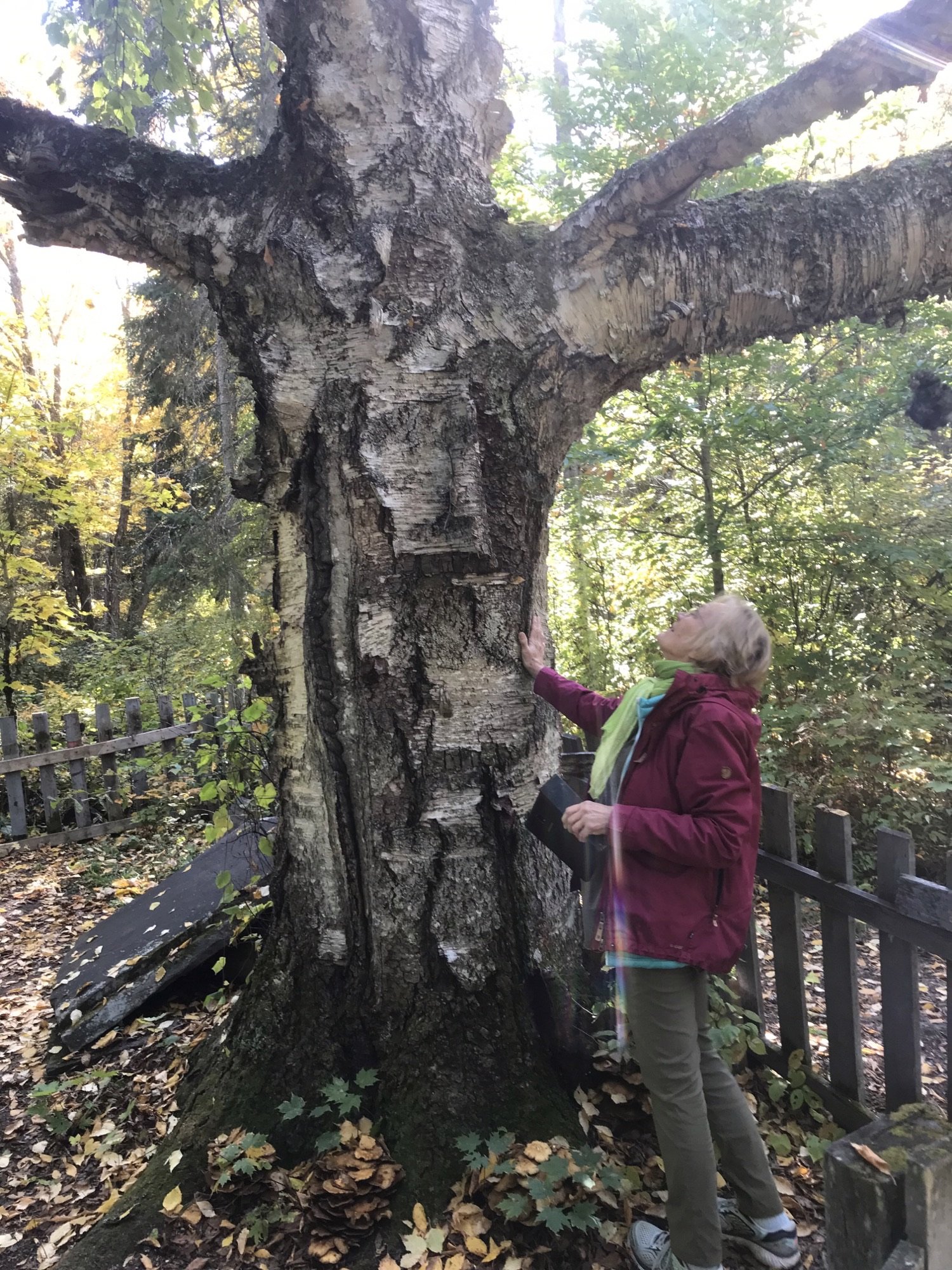A Visit to Tom Thomson’s Canoe Lake Grave. ~ by Kaija Savinainen
For many years as an art teacher, I have taught students about the Group of Seven, Emily Carr, Clarence Gagnon, Tom Thomson, and other important Canadian artists. I love bringing to life the human side of the individual artists, and their personal stories, to make it palatable and interesting for students. What of their struggles, their angst, their successes, and their stories that make them who they are. An artist never lives in total isolation to real world events. For some it is revealed on their canvases, in their sculptures, their writings, their music, and some choose to push away those difficult events turning in a different direction with their work. But the work does reflect their individual thinking, their musings, and their emotional state of being. The stories are there if one chooses to look, to spend some time reflecting and understanding. The stories are very much alive today.
One such story of intrigue is the unfortunate early death of Tom Thomson at Canoe Lake, Algonquin Park. He drowned in July 1917. His death still to this day remains a mystery, unresolved. Who did it, why did it happened, how did it happen? Each time I introduce this story to school classes I bring in my collection of text books, show images of Thomson, of his paintings, and present the various stories and theories that are widely known about his demise. Myths blend with facts, memories have faded, time has served to cloud the Thomson narrative, making the mystery richer. The students love hearing every detail no matter how small, of this tragic story. Why was there wire wrapped around Tomson’s legs, what happened to his paddle, why was there a distinct hole in the temple of the skull as indicated in one photo? Many lively discussions on the numerous possibilities and solutions of the how the story unfolded have taken place.
I too have remained curious about where he is buried and how it all happened. Who did what and why. Were there antagonistic feelings, animosities, and hostilities as a result from WW 1 between neighbours at Canoe Lake? Was there a jilted lover, and an angry family wanting retribution? Was there too much drink around a campfire? We know that Thomson was a guide working in Algonquin Park during summers. When he wasn’t guiding, he was painting, sketching, and photographing the natural world as he saw it. So how was it possible for such a strong, capable, and skilled person in a canoe to drown? That is the big question indeed.
I had mentioned in many times in passing that I wanted to find his original place of rest in Algonquin Park. We had tried on a previous spontaneous occasion to locate the site but failed. This time as we travelled to Algonquin Park, Jim mentioned he had connected with a friend who knew of the location of the small cemetery. The locals protect this sacred space not wanting treasure hunters to come in a desecrate or steal from the site. I agree. Leave her as she is. Don’t touch it.
Finally, I was going to see the place with my own eyes, his first and possibly final resting place, although his family maintains his final grave is at Leith Ontario. As we walked along the narrow trail, I kept thinking Thomson had walked here in happier times, perhaps other members of the group had eventually visited the site to pay homage to their friend. “Well, here we are,” said Kirk as we entered a small clearing in the woods. Earlier at the turn of the century the cemetery site had been visible from Canoe Lake but now, this was no longer the case. Trees, shrubs, a full forest had re-established herself providing much needed camouflage and protection. Yes, the huge ancient birch tree that I had seen in photographs was standing there tall, safeguarding the place. So was the small picket fence and several gravestones. It was all there. I reached out gently touching her aged trunk. “Man, she was so old, some parts of her so bent from time” I thought. Her roots reaching deep into the soil holding in place the mystery of what had happened so long ago. For once I was at a loss for words. I stood there for a long time imagining what had occurred, trying to hear voices from the past. Is Thomson here I wondered? If only spirits could speak.
The photo here was taken that day at Canoe Lake where Thomson was first buried at the foot of a magnificent, old growth white birch tree. Check the story online – such mystery and intrigue.
https://www.cbc.ca/radio/q/blog/why-the-100-year-old-mystery-of-tom-thomson-s-death-lives-on-1.4193463



